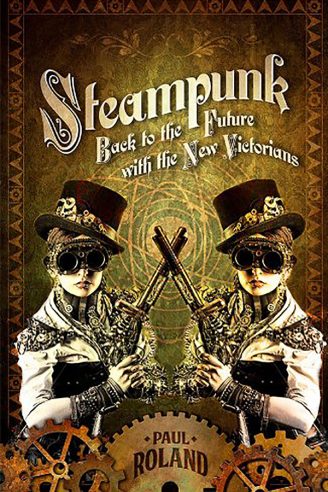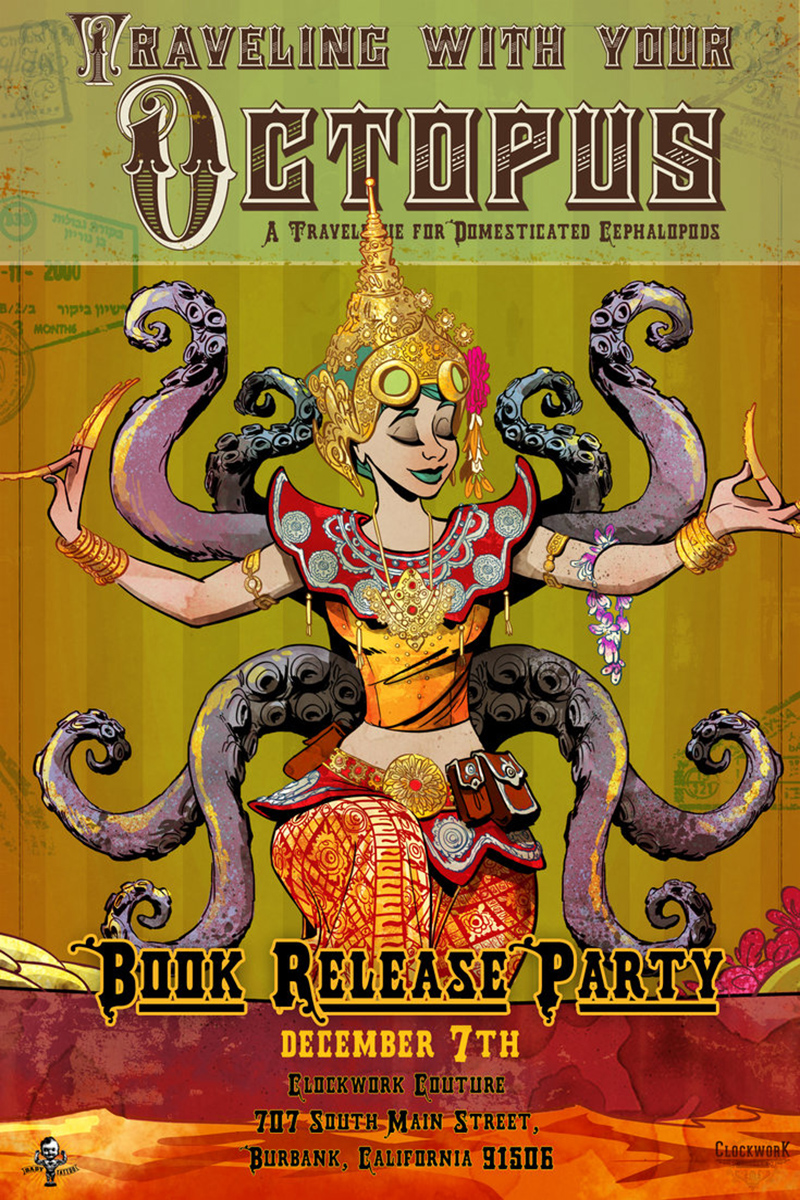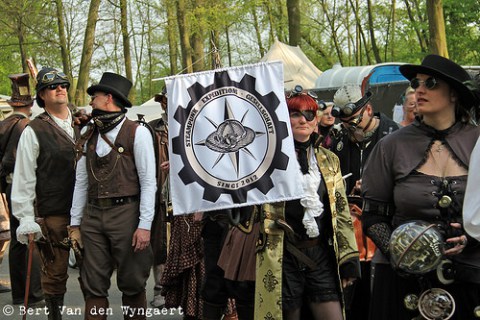Steampunk: Back to the Future with the New Victorians gives the reader an introduction to steampunk culture, including a historical view on how steampunk evolved from being a literary genre to the culture we know today.
Author Paul Roland presents us an overview of leading artists, musicians, authors and other key figures of steampunk. You can find a selection of steampunk books, music, art, fashion, events and films, all summarized and sometimes even with a short extract.
To loosen the listing of people, there are several interviews with the ones mentioned in there, such as author Cherie Priest or the musicians Captain Robert of Abney Park and Professor Elemental, to name but a few.
I really enjoyed reading the interviews although I think some of the questions were a bit to suggestive with only little freedom to answer for the participants. On the other hand, those questions make it easier to compare certain views as they are used repeatedly.
Speaking of views, I have to note that in all of the presentations of books, films and so on the personal opinion of the author is highly visible up to a point where I have to say: I beg to differ, sir!
For example, he compares the music of Abney Park to the German band Rammstein and describes them as a “less aggressive version” of the latter. I really can’t see a connection here.
Despite those differences of opinion, I really had a lot of fun reading the book. It must clearly be stated that it aims more at newbies of the scene who want to learn more and have some suggestions on where to continue their search for steampunk knowledge. (Always keeping in mind that it’s the author’s selection and not a universal answer to all questions concerning steampunk.)
For the rest of us, most of the given examples are already known and the history of our genre shouldn’t be something entirely new. The big pro of the book is the author’s style of writing: he uses a lot of puns and I mean really a lot, which makes it worthwhile to read through his collection of steampunk creations. Even if you already know the examples, you might still find something you didn’t knew up until now (as I did, too, especially in the steampunk music chapter as well as the steampunk books).
The paperback edition also makes it easy to take the book along (maybe while travelling to the next meet-up?). Unfortunately, that also means it only has few selected pictures in the middle of the book, which seemed a bit random to me.
The biggest con (despite the author’s strong opinion in some points) is its end: after the really well-written preceding chapters, the last one about steampunk games (either digital or analogue) finishes with some lists and then it’s suddenly the end (before the bibliography and resources).
I would have wished for a proper epilogue there, maybe with some suggestions on where the genre is going, instead of squeezing some last informations in and then just stop writing. It seemed a bit like the games had to be in the book, but there wasn’t an awful lot to say about them.
To conclude: I only recommend this book to those who can stand a strong opinion and still carry on readying when faced with some disputable statements (For me, Wild Wild West still is steampunk!) — especially as the writing style is really entertaining.
It is, in fact, a good compilation for those only starting to get into steampunk and a good overview for all the facets that steampunk has. But remember: Not everything is true just because it’s written down!





